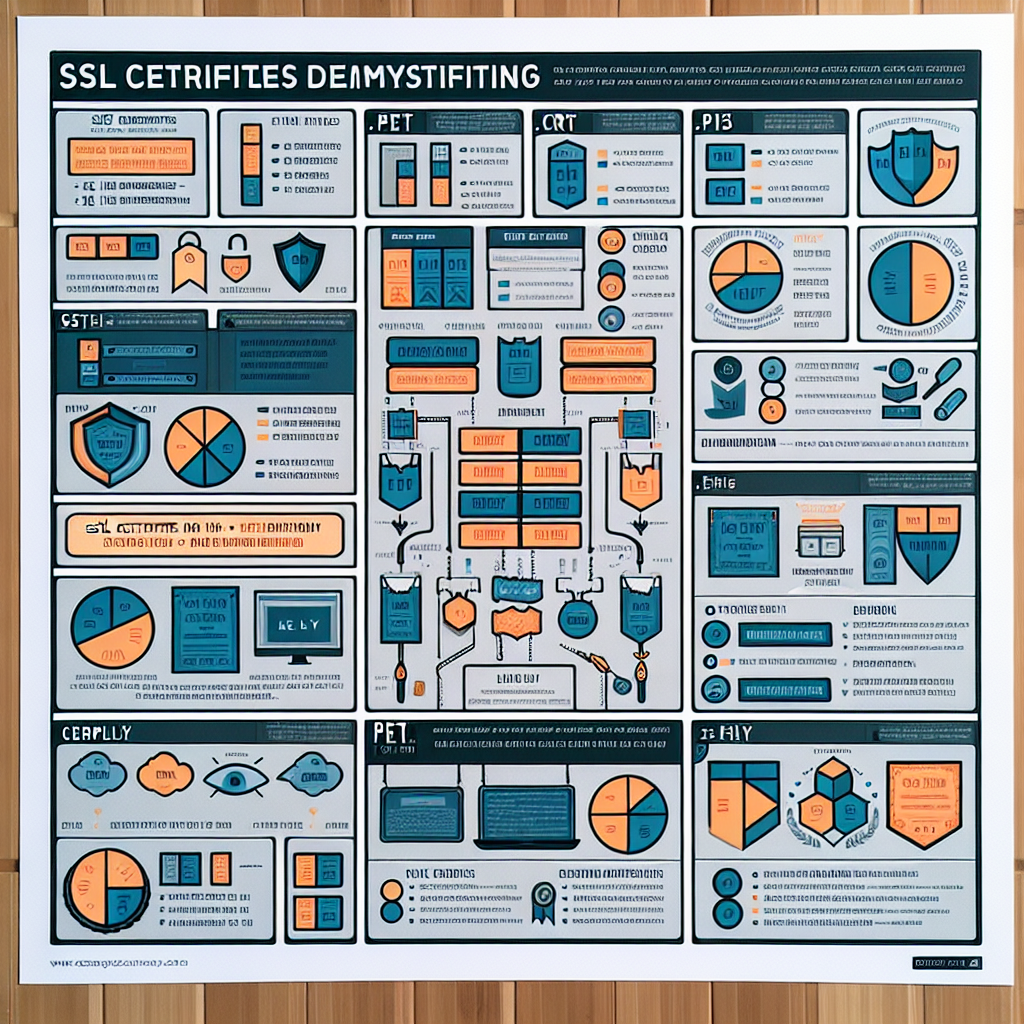Demystifying SSL Certificates - Understanding .pem, .crt, .p12, and .key Files

In today's digital world, ensuring the security and integrity of online communications is of paramount importance. One of the key technologies that guarantee secure connections is SSL (Secure Sockets Layer) certificates. SSL certificates are small data files that bind cryptographic keys to an organization's details, allowing secure connections between a web server and a browser. In this blog post, we will delve into the different types of SSL certificate files, namely .pem, .crt, .p12, and .key, and explore their significance in securing online communications.
1. .pem Files
A .pem (Privacy Enhanced Mail) file is a widely used format for storing SSL certificates, private keys, and intermediate certificates. It uses the Base64 encoding method and typically has a .pem extension. .pem files are ASCII text files that contain encoded data, including the certificate itself, any intermediate certificates, and the associated private key. These files are frequently used in Unix-based systems, such as Linux.
2. .crt Files
.crt (Certificate) files are another common format for SSL certificates. They contain the public key portion of an SSL/TLS certificate, including details like the domain name, validity period, and issuer's information. .crt files can be encoded in different formats, such as DER (Distinguished Encoding Rules) or PEM (Base64 encoded ASCII). While .crt files are widely supported across platforms, they typically don't include the private key.
3. .p12 Files
.p12 (Personal Information Exchange) files, also known as PKCS#12 files, are used for storing both the private key and the corresponding certificate in a single encrypted file. They are commonly used in Windows-based environments. .p12 files are password-protected and can be used for secure distribution and backup of SSL certificates. They usually have a .p12 or .pfx extension.
4. .key Files
.key files, often referred to as private key files, contain the private key component of an SSL certificate. They are crucial for establishing secure encrypted connections. While .key files are not standardized, they usually come in PEM format and can be password-protected for added security. It's essential to keep the private key file secure and never share it with unauthorized individuals.
Conclusion
SSL certificates play a critical role in securing online communications by encrypting data transmitted between web servers and browsers. Understanding the different types of SSL certificate files is essential for managing and configuring secure connections. In this blog post, we explored the .pem, .crt, .p12, and .key file formats commonly associated with SSL certificates. By familiarizing yourself with these file formats and their specific use cases, you'll be better equipped to handle SSL certificates and ensure the privacy and security of your online interactions. Remember, securing your digital communications is a continuous effort, and staying informed about SSL certificate practices is crucial in today's interconnected world.